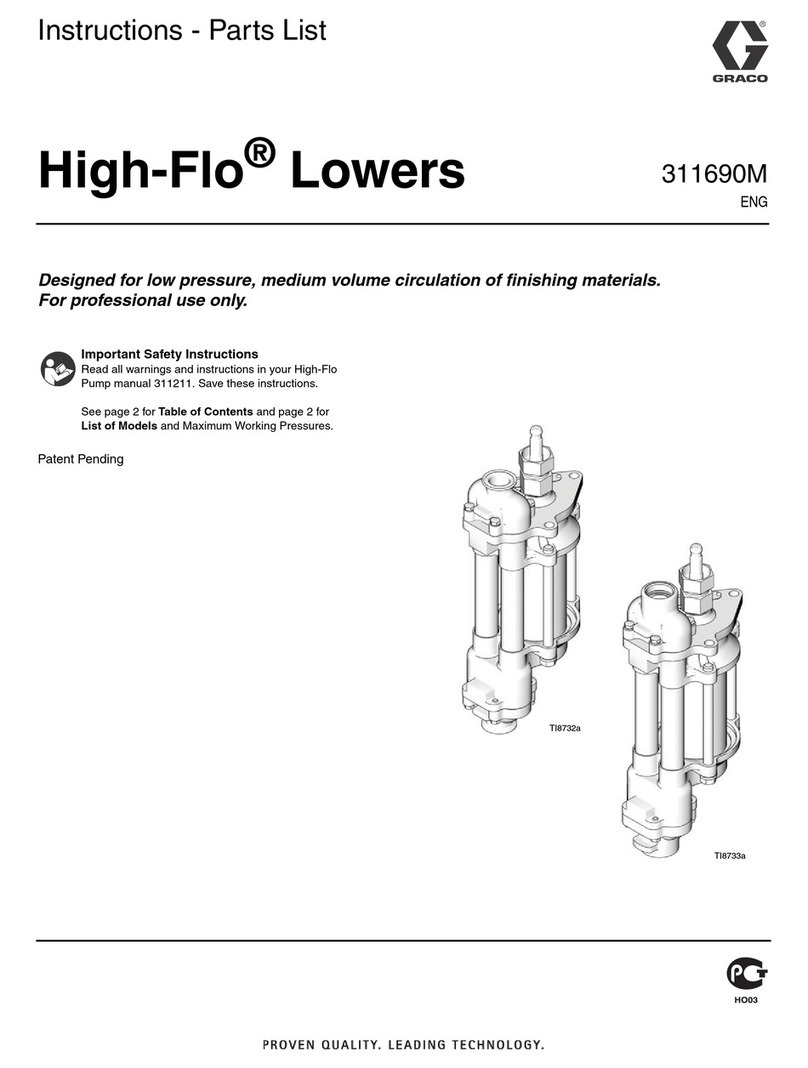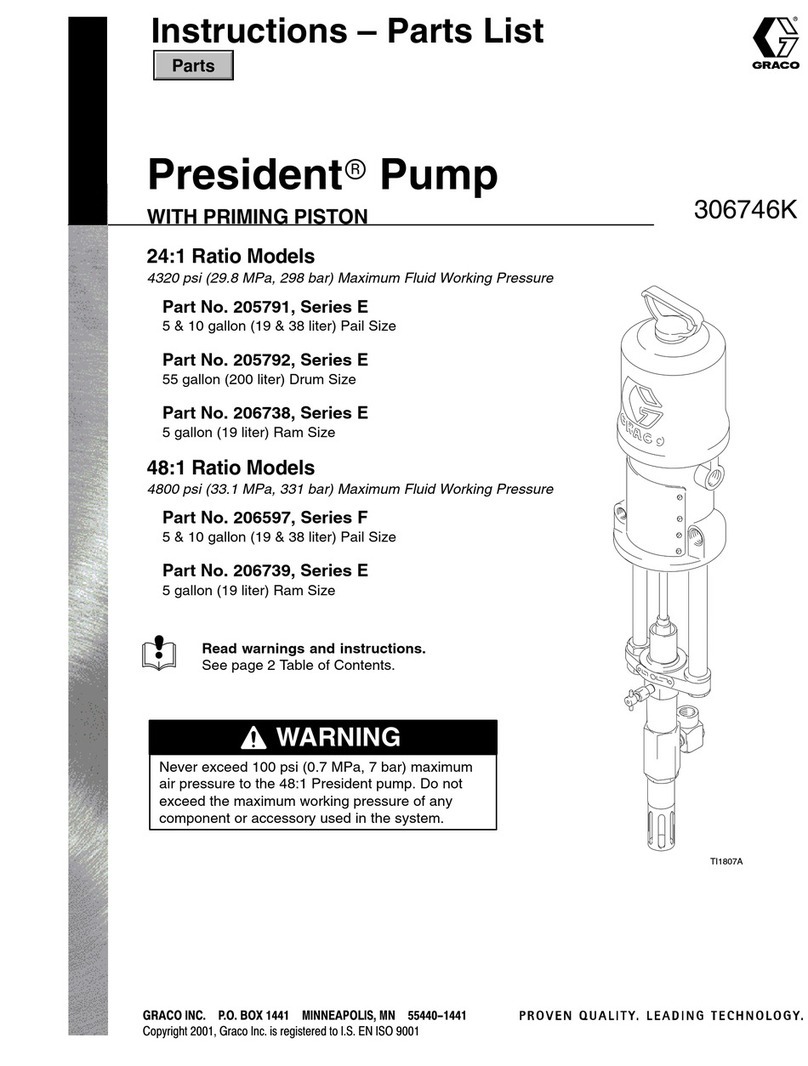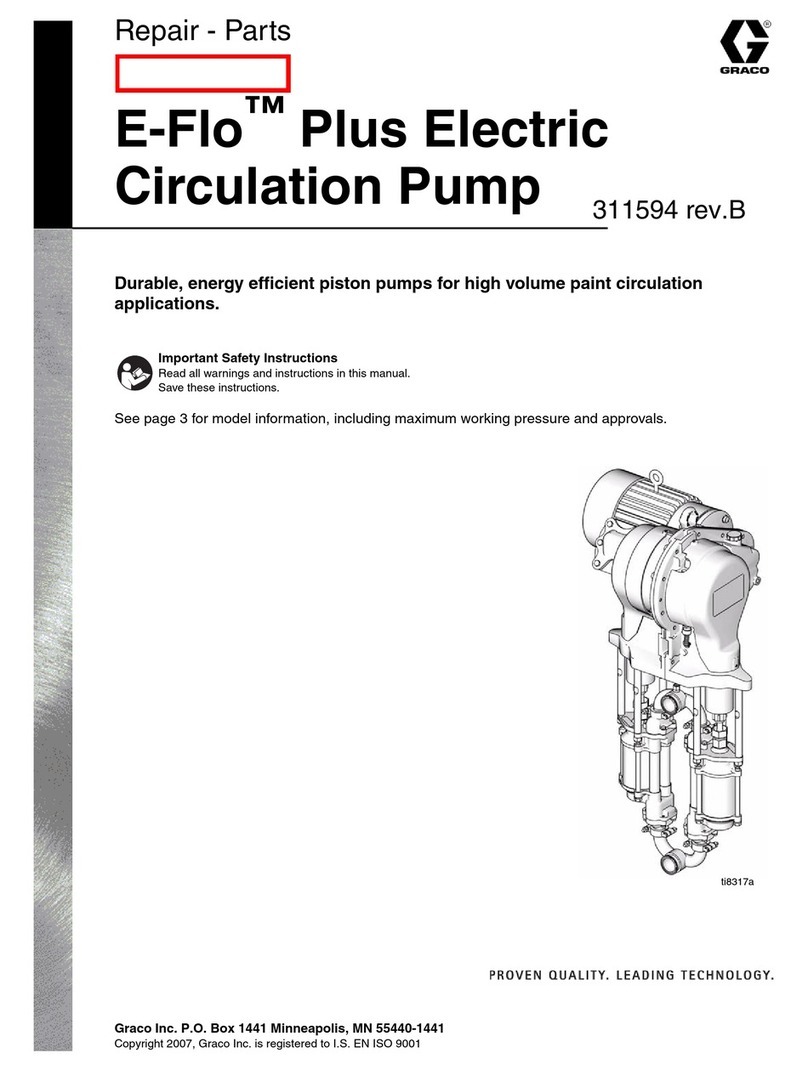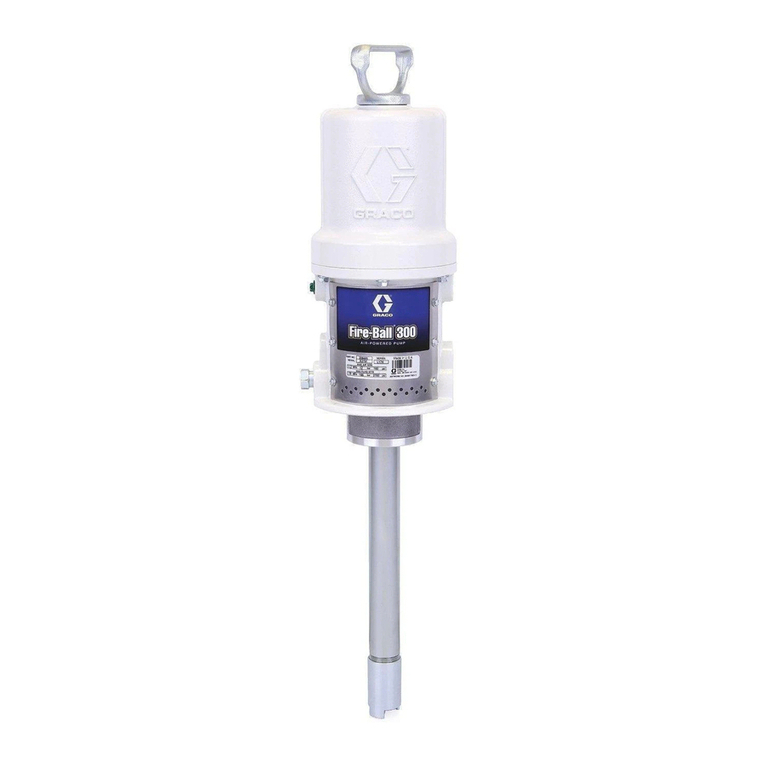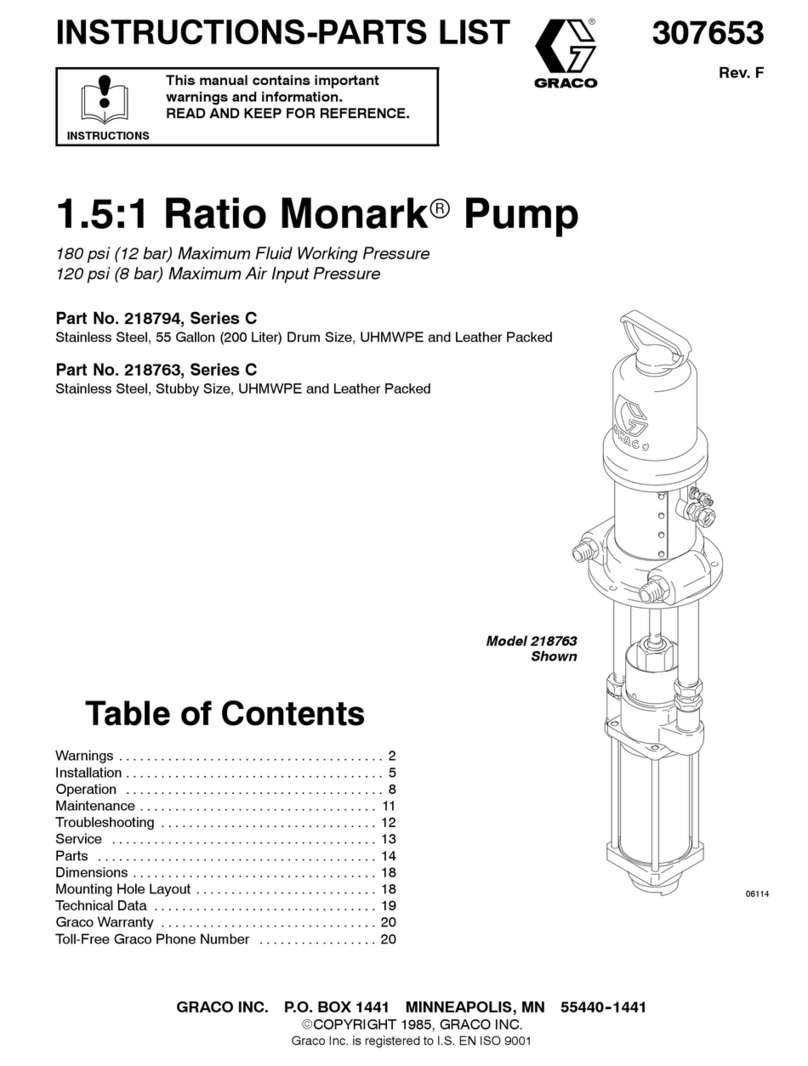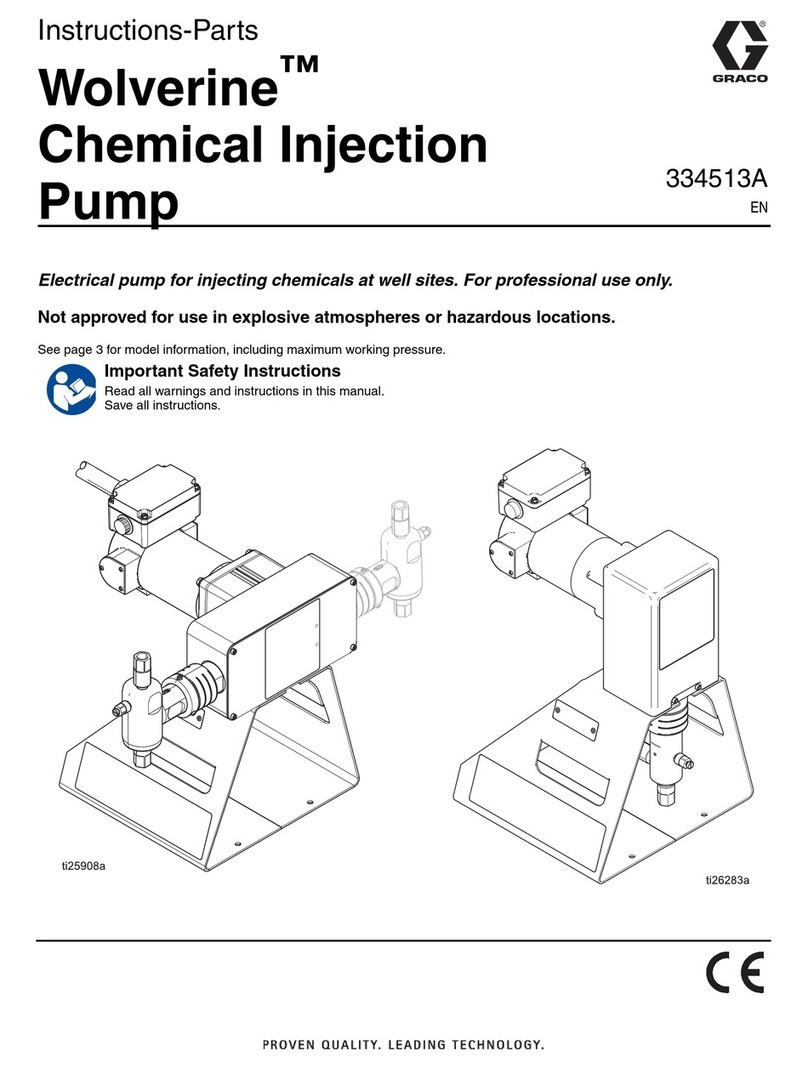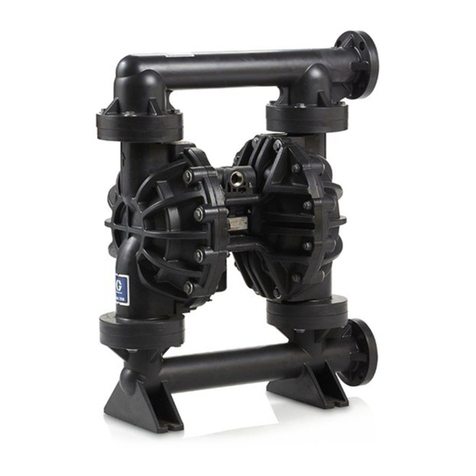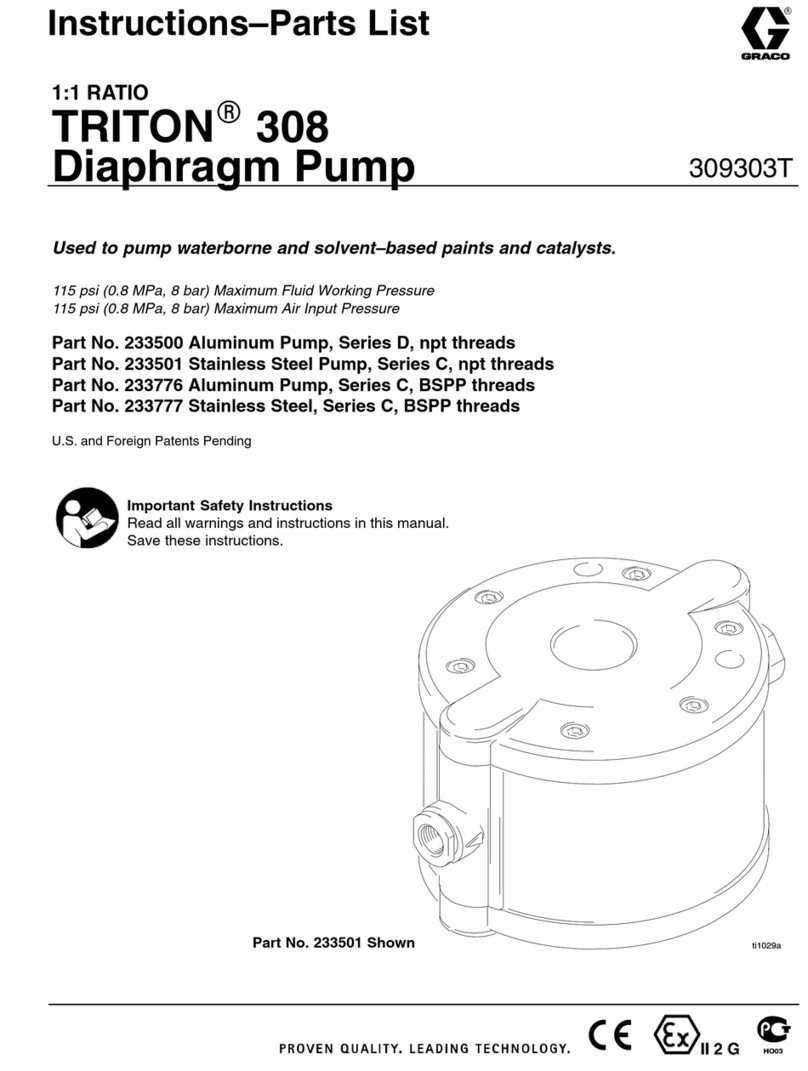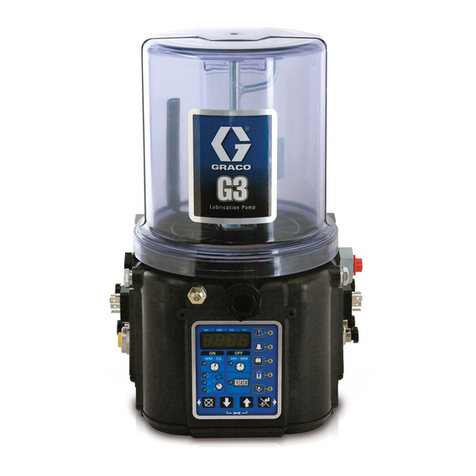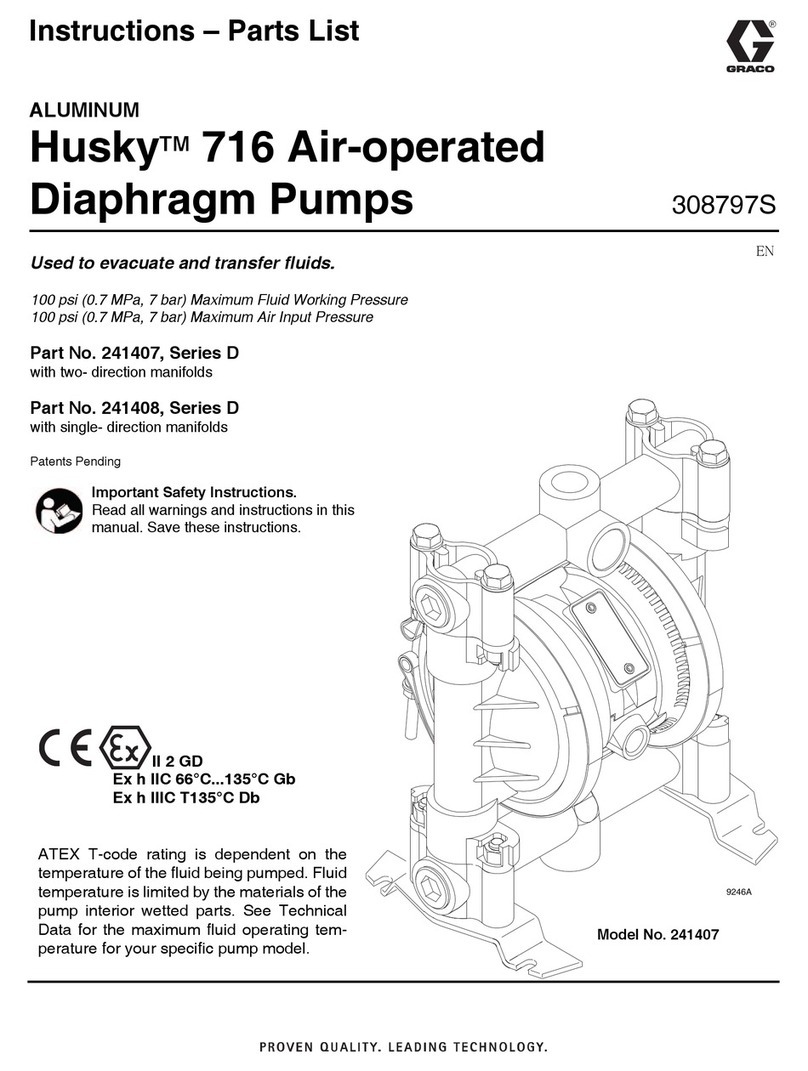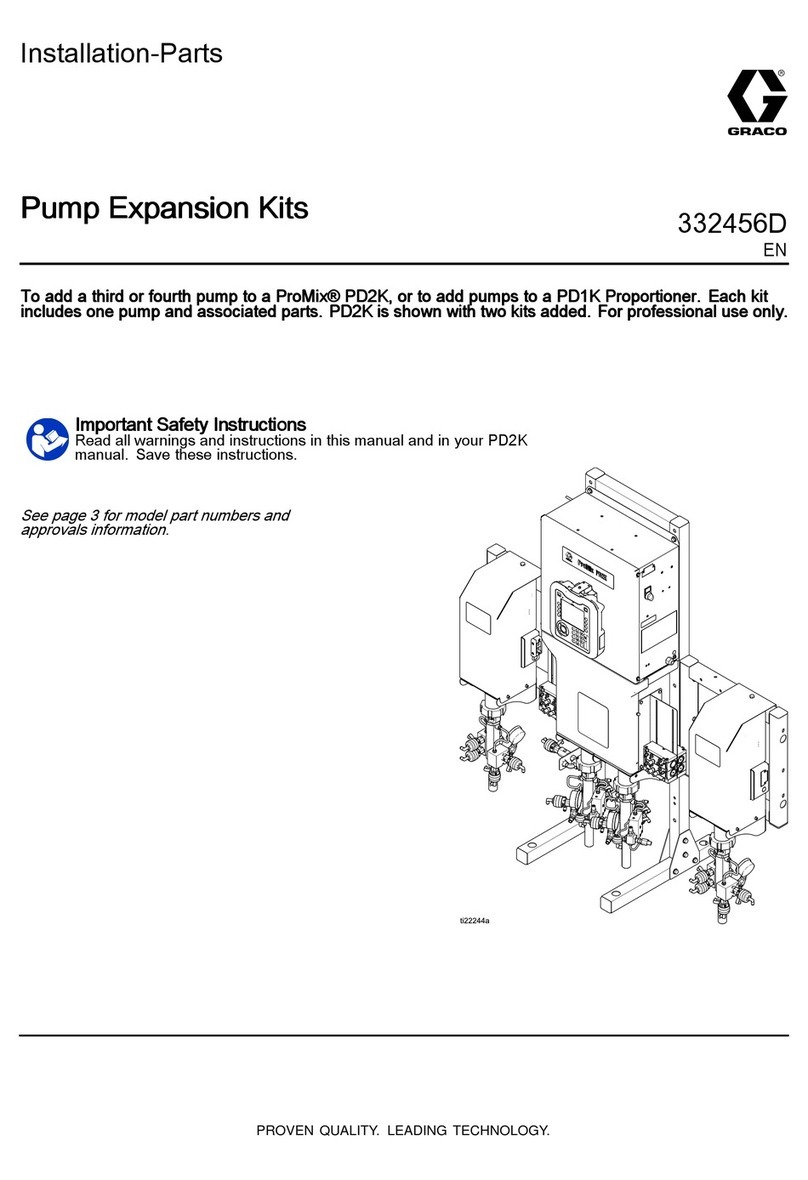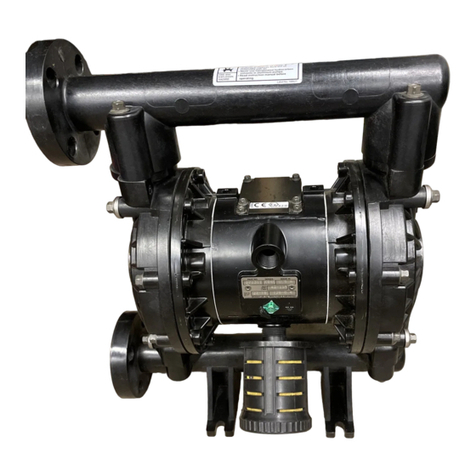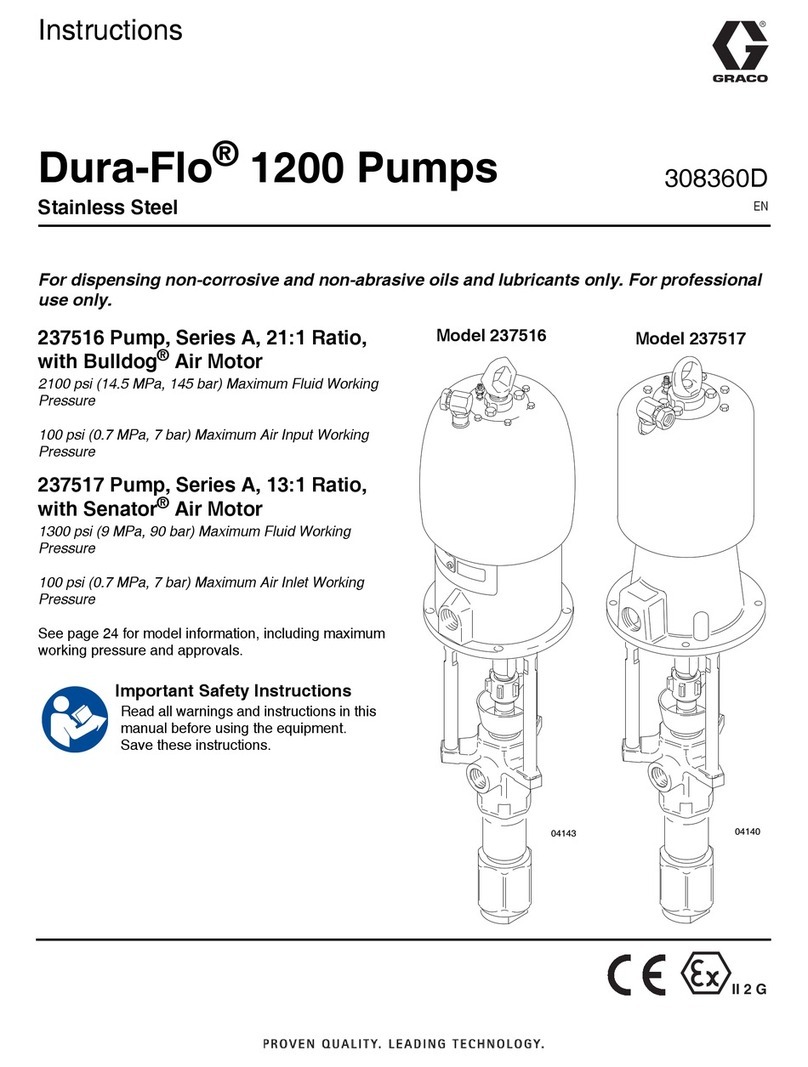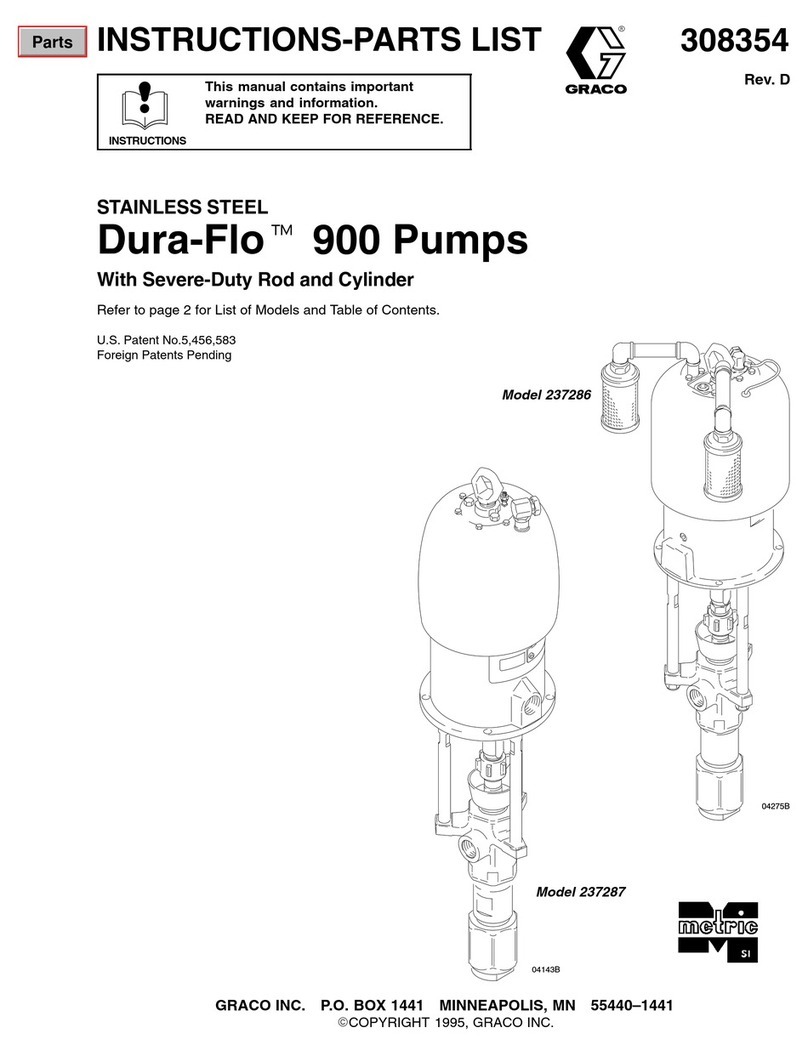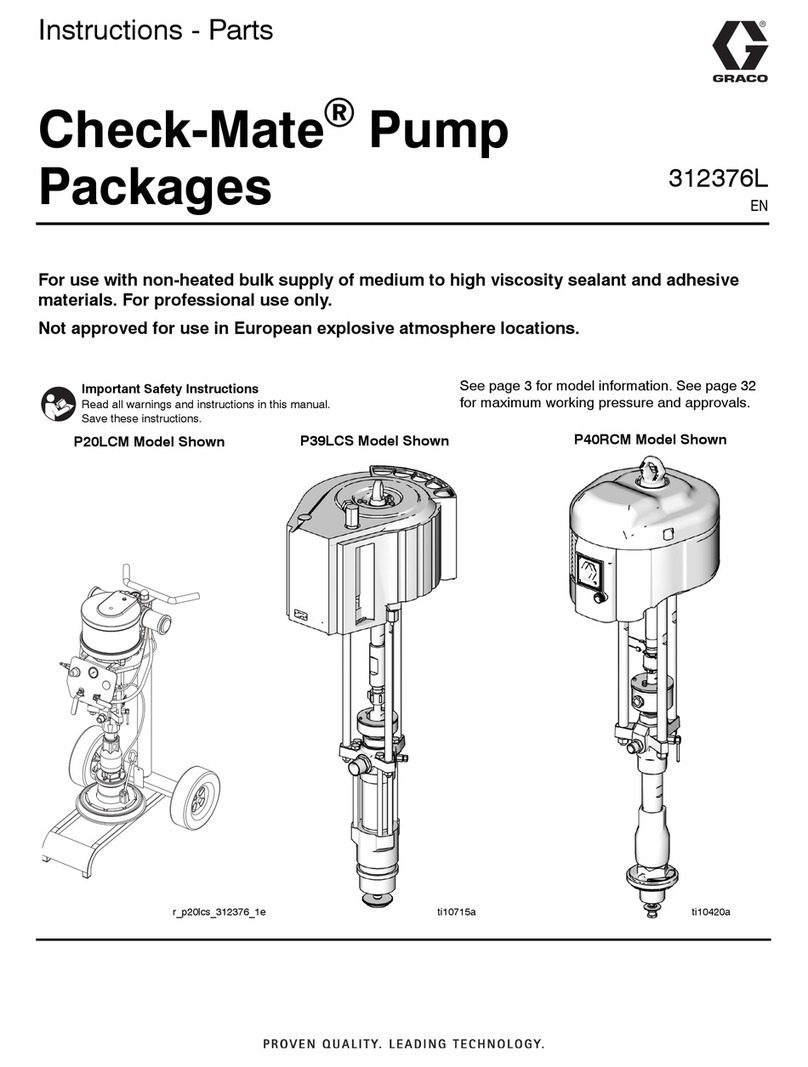Installation
Installation
Genera Information
The Typical Installation shown is only a guide for
selecting and installing system components. Contact
your Graco distributor for assistance in planning a
system to suit your needs. Always use Genuine
Graco Parts and accessories. Be sure all accessories
are adequately sized and pressure rated to meet the
system’s requirements.
Reference letters in the text, for example (A), refer to
the callouts in the figures.
Variations in color between the plastic components
of this pump are normal. Color variation does not
affect the performance of the pump.
Tighten Fasteners
Before mounting and using the pump for the first time,
check and retorque all external fasteners. Follow
Torque Instructions, page 16, or see the torque
tag on your pump. After the first day of operation,
retorque the fasteners.
Tips to Reduce Cavitation
Cavitation in an AODD pump is the formation and
collapse of bubbles in the pumped liquid. Frequent
or excessive cavitation can cause serious damage,
including pitting and early wear of fluid chambers,
balls, and seats. It may result in reduced efficiency of
the pump. Cavitation damage and reduced efficiency
both result in increased operating costs.
Cavitation depends on the vapor pressure of the
pumped liquid, the system suction pressure, and the
velocity pressure. It can be reduced by changing any
of these factors.
1. Reduce vapor pressure: Decrease the
temperature of the pumped liquid.
2. Increase suction pressure:
a. Lower the installed position of the pump
relative to the liquid level in the supply.
b. Reduce the friction length of the suction
piping. Remember that fittings add friction
length to the piping. Reduce the number of
fittings to reduce the friction length.
c. Increase the size of the suction piping.
NOTE:
Be sure the inlet fluid pressure does not
exceed 25 % of the outlet working pressure.
3. Reduce liquid velocity: Slow the cyclic rate of
the pump.
Pumped liquid viscosity is also very important but
normally is controlled by factors that are process
dependent and cannot be changed to reduce
cavitation. Viscous liquids are more difficult to pump
and more prone to cavitation.
Graco recommends taking all the above factors
into account in system design. To maintain pump
efficiency, supply only enough air pressure to the
pump to achieve the required flow.
Graco distributors can supply site specific
suggestions to improve pump performance and
reduce operating costs.
Mount The Pump
To avoid serious injury or death from toxic fluid or
fumes:
• Ventilatetoaremotearea. Thepump
exhaust air may contain contaminants. See
Air Exhaust Ventilation, page 11.
• ever move or lift a pump under pressure. If
dropped, the fluid section may rupture. Always
follow the Pressure Relief Procedure, page 14,
before moving or lifting the pump.
1. Be sure the mounting surface can support the
weight of the pump, hoses, and accessories, as
well as the stress caused during operation.
2. For all mountings, be sure the pump is secured
with screws through the mounting feet.
3. Make sure the surface is flat and that the pump
doesn’t wobble.
4. For ease of operation and service, mount the
pump so air valve, air inlet, fluid inlet and fluid
outlet ports are easily accessible.
83A2578

